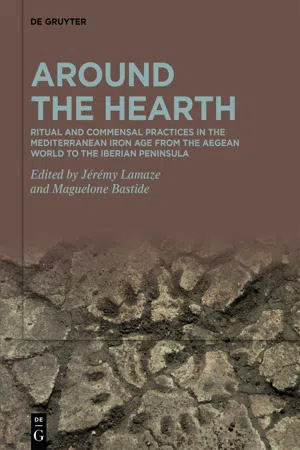
Around the Hearth
Ritual and commensal practices in the Mediterranean Iron Age from the Aegean World to the Iberian Peninsula
- 296 pages
- English
- ePUB (mobile friendly)
- Available on iOS & Android
Around the Hearth
Ritual and commensal practices in the Mediterranean Iron Age from the Aegean World to the Iberian Peninsula
About This Book
From basic needs, such as lighting, heating or cooking, to symbolic or ritual engagement, hearths in indoor contexts serve as a focal point. This is especially evident, both spatially and architecturally, in structures containing central hearths. In assessing any gathering around a hearth, the types of social groups involved need to be determined and their interactions clearly assessed in each specific case. Beyond clearly domestic contexts, many rooms or buildings have been deemed religious or cultic places often based solely on the presence of a hearth, despite other possible interpretations. This volume appraises and contextualises diversity in practice centering on the hearth in the Aegean and, more widely, in areas of the Western Mediterranean closely connected to Greek civilization, notably through its colonies, revealing surprising similarities but also local adaptations. In the West, the use of the hearth often has a unique character arising from local adaptations born of indigenous practices. The combined approach presented here, detailing technical aspects of the hearths themselves, their architectural settings and any associated artefacts or furnishings, affords a rich spectrum for cross-cultural analysis between these Mediterranean regions.
Frequently asked questions
Information
Aegean World

Behind closed doors? Greek sacrificial rituals performed inside buildings in the Early Iron Age and the Archaic period
Abstract
Table of contents
- Title Page
- Copyright
- Contents
- Hearth or Altar? Around the Hearth: An Introduction
- Aegean World
- Thrace
- Sicily
- South of France
- Iberian Peninsula
- Index: English words
- Index French words
- Index of Toponyms